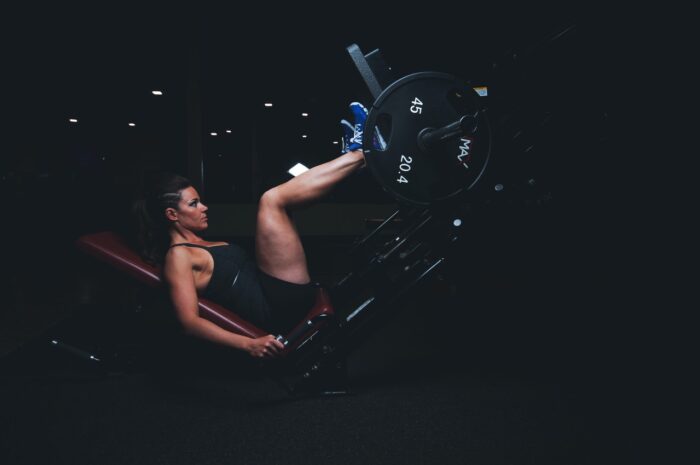
If you have just had a hip operation, chances are you’ve been given a few exercise and recovery tips. These tips can help to ensure that you’re much more likely to recover quicker. However, it can be tempting for you to push yourself too hard. No matter how good you feel, you could end up hurting yourself.
In addition to pushing yourself too hard, you will also need to avoid a few post-operative exercises. This is because they have the potential to damage your hip again. This is something you want to avoid as it could push your recovery back even further.
Let’s take a look at some post-operative exercises that are actually really bad so you can avoid them:
Straight Leg Raises

While straightening your leg while you raise it might seem quite harmless, you could do a lot of damage. This is because a recovering or new hip could struggle. In addition to this, all of the muscles that you use to raise your leg are likely to have already been stretched during surgery. If they haven’t already been stretched, there’s a risk that you could pull on the area where the stitches are located.
Avoid stretching your leg at all costs. When you stand up, you should also try to avoid over-stretching your leg, no matter how tempting it might seem. Stick to doing the exercises that have been recommended to you. They will help you to avoid further injury.
Picking Something Up Off The Floor
This isn’t an exercise, as such, but it is something that you need to avoid doing. Many people have dislocated their hip by picking something up off the floor. This is because when they carry out this movement they’re not sticking to the less-than 90-degree rule. You should bend no more than 90 degrees at any time during the recovery process. This will ensure you’re more likely to recover quickly.
When you’re recovering from any type of hip surgery, it’s useful to have someone help you grab anything off the floor. Alternatively, you could use a grabber to help you. This can potentially make life easier and help to prevent you from hurting yourself even more. It’s not worth the risk, so use caution at all times.
Exercises That Stretch The Side of the Hip/Glute
If your hip operation was performed from a posterior approach, you should avoid any exercise that stretches the side of the hip/glute. In other words, you should avoid any exercises that:
- Involve you bringing the leg across and in front of the other leg
- Involve you raising your leg or lifting it in front of your body
- Involve you raising the affected leg and turning it so that your foot goes over the opposite knee
- Involve you bringing your knees right up to your chest
Carrying out any of the above movements could cause a lot of issues. Don’t risk it, just to see if they hurt. Assume that the above exercises will cause you pain and discomfort, they will. In some cases, you might even find yourself needing more treatment. You can potentially avoid this by stretching the side of your hip/glute.
Putting Your Shoes on and Tying Them
While this might not seem like a big deal, it can potentially cause a lot of problems. When putting on their shoes, many people bend forward and bend more than 90 degrees. Other people will cross one leg over the other, but again, this can cause problems. One of the best things you can do is to slowly slide your affected foot up the other leg.
It could take up to 6 weeks for you to be able to put your shoes on and tie them. However, by this stage, you are likely to be able to do some of the exercises set out by your physical therapist at oaklandspinenj.com. Your doctor is likely to have given you a few more exercises to do, or they may simply be monitoring your recovery.
Sitting Down For Long Periods of Time
Did you know that sitting down for long periods of time can cause issues? This is because the muscles surrounding your hip can become tight. The blood supply to the hip isn’t great so movement is required to pump your blood to the joint.
Try to get up every 30-45 minutes as this will help you to heal quicker thanks to the increased flow of blood. Ok, so this doesn’t exercise as such, but it can help to make a real difference.
Top tip: If you’re sitting in a low chair add a cushion so you can increase the height of your hip. Ideally, your hip should be higher than your knees. Make sure you’re sat securely on the cushion. You should not need to keep adjusting it or feel as if you’re about to fall off it.
Heavy Lifting, Jumping and Running

Any exercise that involves heavy lifting, jumping, or running should be avoided. You should ideally wait until your hip is completely healed before you take the risk. I know a lot of people will feel confident that they can go back to the gym, for example, but they will be taking a risk. Did you know that you could even hurt yourself if you were to step up onto the sidewalk or down the road? Wait at least 12 weeks before you attempt to do any of the above and you’ll be less likely to hurt yourself.
If you have had hip replacement surgery or any type of operation on your hip, you need to be careful. Understanding what exercises you should avoid can mean you’re less likely to be injured. Just make sure you follow your doctor’s and physical therapist’s instructions. Keep doing the exercises that they recommend and you should see an improvement soon.
If you have any concerns about your recovery please make sure you speak to your doctor or physical therapist.









